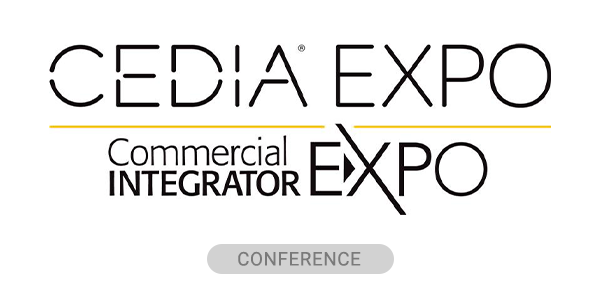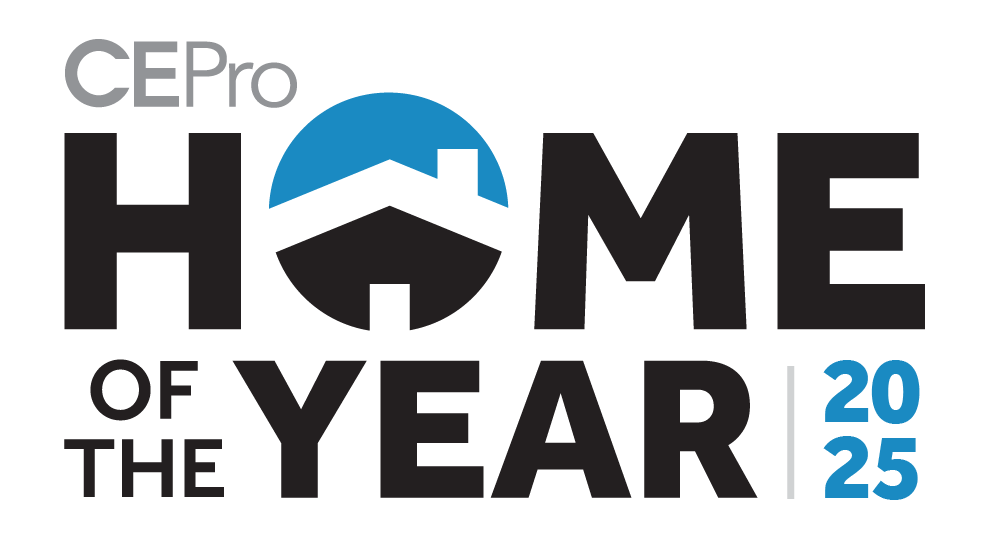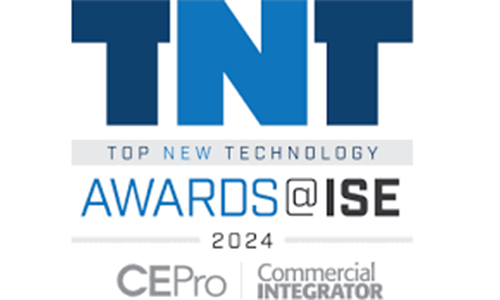It’s no coincidence that last year Emerald introduced the co-located Commercial Integrator Expo into the mix as an inaugural co-located tradeshow with the annual CEDIA Expo. While the commercial market took a hit during the pandemic and thereafter struggled as corporate offices became more sparsely populated due to hybrid workplaces, the situation is steadily returning to pre-Covid times when light commercial/resimercial emerged as strong opportunities for residential dealers.
That was one of the key themes revealed in CE Pro’s 2024 State of the Industry study, in which surveyed integrators reported median revenues of $1,107,143 that were split between two-thirds earnings from residential work and one-third commercial jobs. That adds up to a solid $350K coming from commercial work in addition to the roughly $750K from residential projects, factoring installation, labor, and service revenues for each market.
It also represents a dip from 74% to 68% in terms of percentage of revenue generated from bread-and-butter residential projects. On the commercial/resimercial side, custom integrators are also branching out in their vertical market diversification. Retail and government jobs gained traction last year, for instance, and the percentage of dealers doing commercial work increased by 13%, including 9% in new construction commercial jobs.
CEDIA is seeing similar success in the encroachment of commercial within the scope of the custom channel. In the association’s biannual Market Research Analysis survey, conducted by Ancrage Consulting in affiliation with Butler University’s Lacy School of Business and released in December, the resi/commercial split was 78%/22%, but that represented a 5% dip in residential from their previous study.
In that resimercial area straddling both sectors, the multidwelling unit (MDU) market has also proven to be a fruitful one for custom integrators as 33% engage in these jobs, which is a solid 7% surge compared with 2022.
Integrators Express Optimistic Outlook for 2024 State of the Industry
Judging from the studies by both CE Pro and CEDIA (which was augmented by data from D-Tools and Portal), it’s safe to say the custom integration industry is robust and thriving. CEDIA estimates the industry comprises 20,000 integration companies that drive a $29 billion U.S. market — up from $20.1 billion in its previous report that was released in April 2022.
And despite the uncertainties of 2024 — including the economic climate, ongoing conflicts in Europe and the Middle East, and a big elections cycle — integrators are predicting continued high times in general this year. Overall, integrators expect to increase revenues by a healthy median of 9.1% in 2024.
While nearly one-quarter of dealers (23%) anticipate growth to be flat this year, nearly 1 in 5 (19%) are forecasting incredible revenue growth of greater than 31%, according to the 2024 State of the Industry study. A near quarter of integrators (23%) predict revenue increases between 11% and 30%, while another 23% are anticipating growth up to 10% this year.
Meanwhile, CEDIA’s numbers are similarly rosy for 2024. Revenue growth forecast by company size is 9% for integration firms that earn $14+ million; 24% for those earning $1M to $4M; and a whopping 33% for integrators with less than $1 million in annual revenue.
Integrators cite the economy and workforce situations as the biggest challenges they are facing in 2024. Economic slowdown is the leading concern, ahead of rising labor costs, inflation, labor shortage, and unprofessionalism in the industry.
Project & Personnel Size Show Efficient Production
The breadth of integrator sizes and project scopes represented in the CE Pro and CEDIA surveys is a wide one. CEDIA survey respondents ranged from businesses that earned less than $100,000 to those that raked in more than $40 million in revenues, with a median of $900,000 — which aligns fairly well with CE Pro’s $1.1 million figure previously mentioned.
When it comes to the size of companies producing these revenues, CE Pro found the median integrator has 12.5 employees, a shade above last year’s 11 reported. However, more than-one third of companies (36%) are either one-man shops (12%) or have just up to four employees (24%), while on the other end of this bell curve spectrum there’s a similar percentage of dealers with 21-30 employees (12%) and more than 30 on staff (23%).
CEDIA’s Market Research Analysis found the average number of integration company employees is 11; half (51%) have five or fewer, and 14% employ more than 20. So taking a look at production per employee, dividing revenues by CEDIA’s average integrator personnel and CE Pro’s median equates to roughly $81.8K and $88.5K revenue generated per employee, respectively.
Meanwhile, per CEDIA’s report, median (midpoint) project size is estimated to be around $15,000, taking into account a range of $12K to $21K based on sales pipelines and survey data, according to the association. Average project size is between $20K and $57K.
In CE Pro’s 2024 State of the Industry survey, respondents reported a $20,357 median residential project price in 2023 and $19,167 median commercial installation price in 2023. Nearly half (48%) fell in the $20K to $50K project range, while the biggest gains were actually in smaller systems — the amount of jobs less than $5,000 spiked 10% from last year up to an eye-opening 23% in 2023.
Whatever size job it is, integrators seem to be profiting well on their work. Per D-Tools data, dealers are earning 48% profit margin on their projects.
Trending Installation Categories & Service Revenues
The aforementioned median project size includes service revenue, which is another area where integrators are diversifying and improving their bottom line.
In perhaps the most surprising data from CEDIA’s survey, 62% of integrators say they offer service contracts, with larger dealers leading the way in this important revenue generator. It’s something CE Pro has been preaching for years as savvy dealers have figured out that recurring revenue flowing in on a monthly, semiannual, or annual basis provides a financial security blanket amid the ups and downs of project cycles.
Among those companies that do receive RMR for their work, it is being banked from various segments, according to the 2024 State of the Industry survey. Dealers report service contacts (22%) as the top method of earning RMR followed closely by previous No. 1, security monitoring (18%), and then commercial remote managed services (15%), remote power managed/remote reboots (13%), remote cloud video storage (12%), and leasing contracts on equipment (10%).
It’s also an area in which myriad companies at CEDIA Expo, for instance, continue to develop products and technologies to help facilitate better service revenue opportunities. Remote management and power/energy management systems have proliferated in recent years to enable dealers to stay more connected to their customers, for instance. Additionally, more dealers are collaborating with lighting designers and lighting fixture providers to drive potential revenue from design services — a portion of projects that’s always been tough to charge separately.
Speaking of products and solutions, for this year’s forecasted trending categories, CE Pro looked at where integrators anticipated growth of 11% to 25% this year. Through that expected growth lens, the top growth categories are multiroom audio (24%), higher-end control systems (21%), home networks/IT (21%), and outdoor installations (19%). Lighting fixtures and security (surveillance cameras, video doorbells, access control) also ranked in the top 10.
While there is a concern about industry unprofessionalism as noted, that hasn’t stopped customers from trusting their integrators’ expertise and opinions for their home technologies. Dealers report having “a great deal” of influence on the final decision-making essentially two-thirds (66%) of the time. That’s about 20% more sway than homeowners and roughly 40% more than other trades such as designers, architects, specifiers, and builders.







